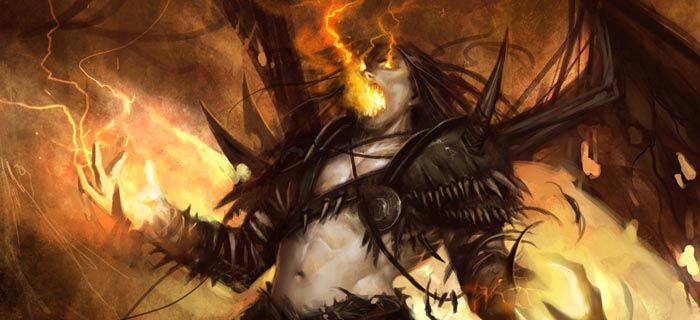AC4 Black Flag multiplayer strategy #7: Identifying Pursuers (behavior and advanced tactics)
Welcome to Part 7 of WiNGSPANTT’s Assassin’s Creed 4: Black Flag multiplayer strategy guide!
Identifying pursuers by behavior
Since this section greatly overlaps with the Identifying Targets section, you should definitely read that part of the guide if you haven’t already. You’ll find a quick list of memorable patterns that players and NPCs are prone to follow.
The primary difference, then, between offensive and defensive behavioral ID strategy is simple: your pursuer is ultimately the character who approaches and murders you.
That may sound obvious, but it’s an important distinction: if your killer intends on ever claiming her contract, she must move towards you and get into a position from which an assassination prompt is possible. While she may not act on this impulse immediately, it is the one giveaway that will ultimately and always reveal her, assuming she doesn’t just stick a Poison Dart in your neck.
Exploit this knowledge to the following ends:
- If you suspect a character, move slowly away from her and see if she follows
- Break line of sight on a suspected persona and see if she tries to regain line of sight
- If a character follows you, pay attention to whisper volume based on her distance
- Move into an open, NPC-free area, making a stealthy approach impossible
- Climb a building and see how suspected characters react (though beware ledge grabs)
Very few players will have the patience and foresight to resist immediately following you, even if it’s at a distance. By carefully screening for obvious behavioral signals and other clues, you can whittle down the list of possible pursuer candidates until there’s only one left: the person climbing the wall under you!
Advanced detection tactics
Player Characters
This is obviously the most important in Deathmatch, where there are no natural player persona duplicates, but in general it’s very important to note which personas your opponents choose at the beginning of the match. You can check the scoreboard for a refresher at any time, but it’s best to begin with as much information as possible. At a max there are only seven, so it’s not too hard to keep tabs.
Once you’ve done this, you can eliminate NPCs from crowds much, much faster than by whispers and behavioral clues alone. If you know, for a fact, that nobody chose the Navigator, you can pretty much rule every copy of him out when you get the sense your murderer is lurking nearby. Similarly, you should be extra suspicious of player personas whenever they’re near – even if you know they’re not currently your pursuer. Contracts can change at a moment’s notice, so take note of who’s who and get ready to react with a well-timed stun (or run!).
While there are plenty of ways for players to circumvent simple persona identification, the reality is that most kills won’t involve persona trickery. You’ll get gutted plain and simple by an undisguised enemy 9 times out of 10. As such, being able to quickly identify or eliminate a character by its persona is a vital skill you must develop if you wish to survive FFA matches.
Microphone
On Xbox Live, your killer will share microphone chat with you as long as neither of you is in a party. While this will obviously vary by platform, it’s a huge boon to take note of which players have their microphones enabled and which personas they’re playing.
If you realize early on that there’s an annoying teenager playing as the Huntsman, you can bet your life (and you will!) that the Huntsman’s coming after you when you hear those pubescent vocal chords grating through your speakers or headphones. Sure, the kid might still come at you with a Disguise or something, but if not, you’ve got an incredibly easy ID laid out for you.
Itchy trigger fingers
When a player inputs the Assassinate command, his persona flicks out a wrist to ready the hidden blade. Normally this action occurs only a second before you’re stabbed, but if a player has locked onto you from afar and is spamming the Assassinate command, his persona will approach with one arm slightly extended in a threatening posture.
Only player characters can perform this subtle stance, so keep your eyes peeled. If you hear whispers and suspect someone of being your killer, look for the telltale tensed hand and wrist. It will look almost exactly the same as the animation from the single player campaign. Hell, spam it yourself in an open area to see how it appears. By the time you see this sign, it will often be too late to run, but you can still contest the kill to even out the score a bit.
Interaction cue
You can’t stun your pursuer from the rooftops, but that won’t prevent the game from giving you an interaction prompt over his head when he stalks around below you. Assuming you’ve correctly identified a player character and not an NPC, you can correctly peg that person as your killer, since you can’t kill or stun any neutral player or teammate.
Technically this works at all close ranges, it’s just that most of the time if you’re figuring this out at ground level you’re also 0.003 seconds away from being dead.
That said, there are certainly times where you’re right next to your pursuer and temporarily safe enough to use this method. For instance, if you’re blended into a Morph group or hiding in a haybale, you can easily confirm that the Puppeteer waltzing by (with Whispers blaring) is your murderer if an “X” pops up over her head when she strays too close. If you’re hiding well enough, you might even earn a focus stun for your vigilance!
Draw distance
As noted in the Advanced Detection Tactics section of the Identifying Targets chapter, player characters are often rendered at a greater distance than NPCs are. If you see a single character standing out at long range, it’s most likely a player, and very possibly your pursuer.
Looking for more tips? Head back to the main Assassin’s Creed multiplayer strategy guide index.








[…] Part 7: Identifying Pursuers (advanced) […]